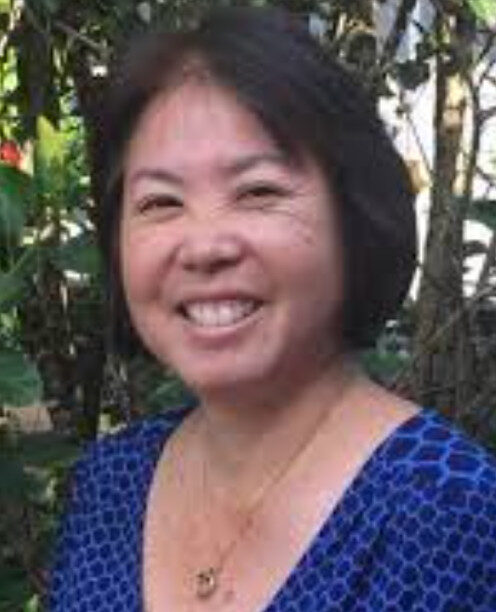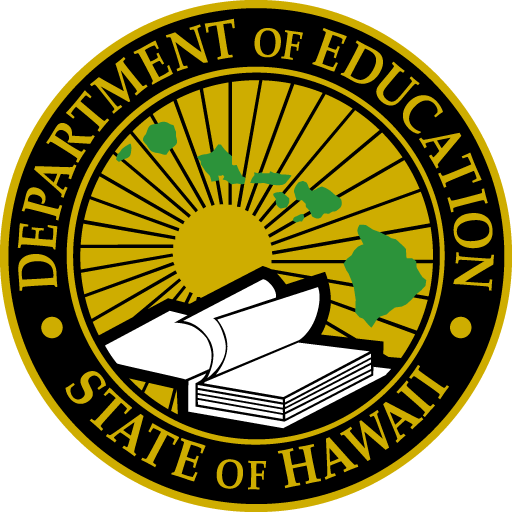
Phyllis Nakama-Kawamoto
Title: Early Learning State Office Teacher
Job site: Executive Office on Early Learning office at Kuhio Elementary School
Years in the HIDOE: 40 years
Years in the position: 10 years
Q: Briefly describe your career path.
A: I was extremely fortunate to have been hired as a kindergarten teacher after graduating from the University of Hawai‘i at Mānoa. My first teaching position was at Paaralang Elementarya ng Nānākuli. I enjoyed my 10 years there. The children and their families were so friendly and welcoming! I then moved on to Elementarya ng Mililani Mauka teaching kindergarten for eight years. During my time at Mililani Mauka, I turned my energy into learning more about teaching mathematics to young children. During this time, I was the 2001 Presidential Award of Excellence in Mathematics and Science Teaching awardee. That was such an incredible honor and this really cemented my commitment in supporting quality mathematical experiences for young children.
In 2004, I had an opportunity to be part of the staff that would be opening a new school called Mililani ‘Ike Elementary. That was an exciting and stressful opportunity as I started off my new kindergarten position teaching still on the Mililani Mauka campus. Because the new school campus wasn’t completed yet, we spent the first semester sharing campus facilities with Mililani Mauka. Imagine being in a double portable with two kindergarten teachers, 20+ children for each of us, no partitions and no nearby bathrooms. If I had to do it again, I would do it! I learned how to be flexible, resilient and to find the “rainbows” in every situation. Mililani ‘Ike was a looping school and this was new practice for me and I really enjoyed it. It afforded me to build and develop lasting relationships with my students and families. After about six years in the classroom, I stepped out of the classroom and became a curriculum coordinator for the school. During this time I went back to school to get my master’s degree in education from the University of Hawai‘i at Mānoa and also became a National Board Certified Teacher.
In 2014, I was asked to join a new office called, The Executive Office on Early Learning. I was very honored to be asked to apply but I was extremely excited that an early childhood initiative was coming to fruition. Fast forward 10 years, I’m still with the office as a coach and mentor. I did step away for about six months to support the Office of Curriculum and Instructional Design as an elementary state office teacher. I’m very fortunate to support both of my passions of early childhood education and mathematics.
Q: How did you get into this role?
A: I got into this field because I enjoyed working with children, especially young children. One of my first jobs was babysitting and then I led Summer Fun in my high school years. My mom was an elementary teacher and so I guess you could say that I was surrounded by educators all my life.
Q: What are your primary duties?
A: My primary duties as a coach and mentor involve providing support, guidance and professional development to early childhood educators. What is key in my position is building and nurturing trusting relationships with the teachers and educational aides. It is challenging to make changes to your instructional practice if you do not trust the coach/mentor. Therefore, it’s imperative to take the time to get to know the teacher and the educational assistant and listen to their concerns and challenges as well as highlight their strengths and potential. It’s important to nurture and encourage open communication, risk-taking and professional growth.
Another one of my duties is to provide curriculum and instructional support within the framework of Developmentally Appropriate Practice. I can assist with curriculum planning, implementation and assessment. I also share and model strategies for engaging children in meaningful interactions that support children’s growth across all areas of development.
I also provide professional development opportunities through Professional Learning Community sessions. This opportunity allows the teachers to meet as a small group and be able to learn with and from each other.
Q: Favorite part about the job?
A: My favorite part of the job is being with teachers and the children in the classrooms. Being in the classroom allows me to be part of the hustle and bustle of a school day. I enjoy when I see children’s faces light up because their block structure didn’t topple or the excitement of discovering what happens when you mix yellow and red paint together. Those are the “kid stories” that I file in my memory box. I’m also filled with joy when I see teachers trying out new ideas that they learned from our professional learning community days. It takes courage to try out new things and be willing to reflect upon that new learning.
Q: Most challenging part about your position?
A: One challenge of this position is being at the airport at 4:30 a.m. to catch the first flight out of Honolulu. Doing that two to three days in a row can be very tiring. One more challenge is trying to visit each teacher regularly regardless of how long they’ve been in our program. Sometimes we think that because a teacher is “seasoned,” they don’t need that much support. All teachers regardless of how many years they’ve been teaching still need some kind of coaching support. As a veteran teacher, I need to have reflective conversations with a colleague. Sometimes being in the classroom can be isolating and it shouldn’t be. We all need to have collegial conversations.
Q: What advice do you have for people considering this position?
A: You need to be flexible, patient and have a sense of humor in this position. There are days when one needs to pivot and you need to change your coaching conversation. Patience is needed because supporting changes to one’s instructional practices takes time. And when all else fails, find something to laugh about and look for joyful moments.
Q: How does your role support student success?
A: My job supports students by supporting teachers to improve their classroom practices. Through the individualized coaching and reflective conversations, the teachers can reflect on their practices and take the next steps to provide a quality learning environment where all children can thrive regardless of their background or abilities.

